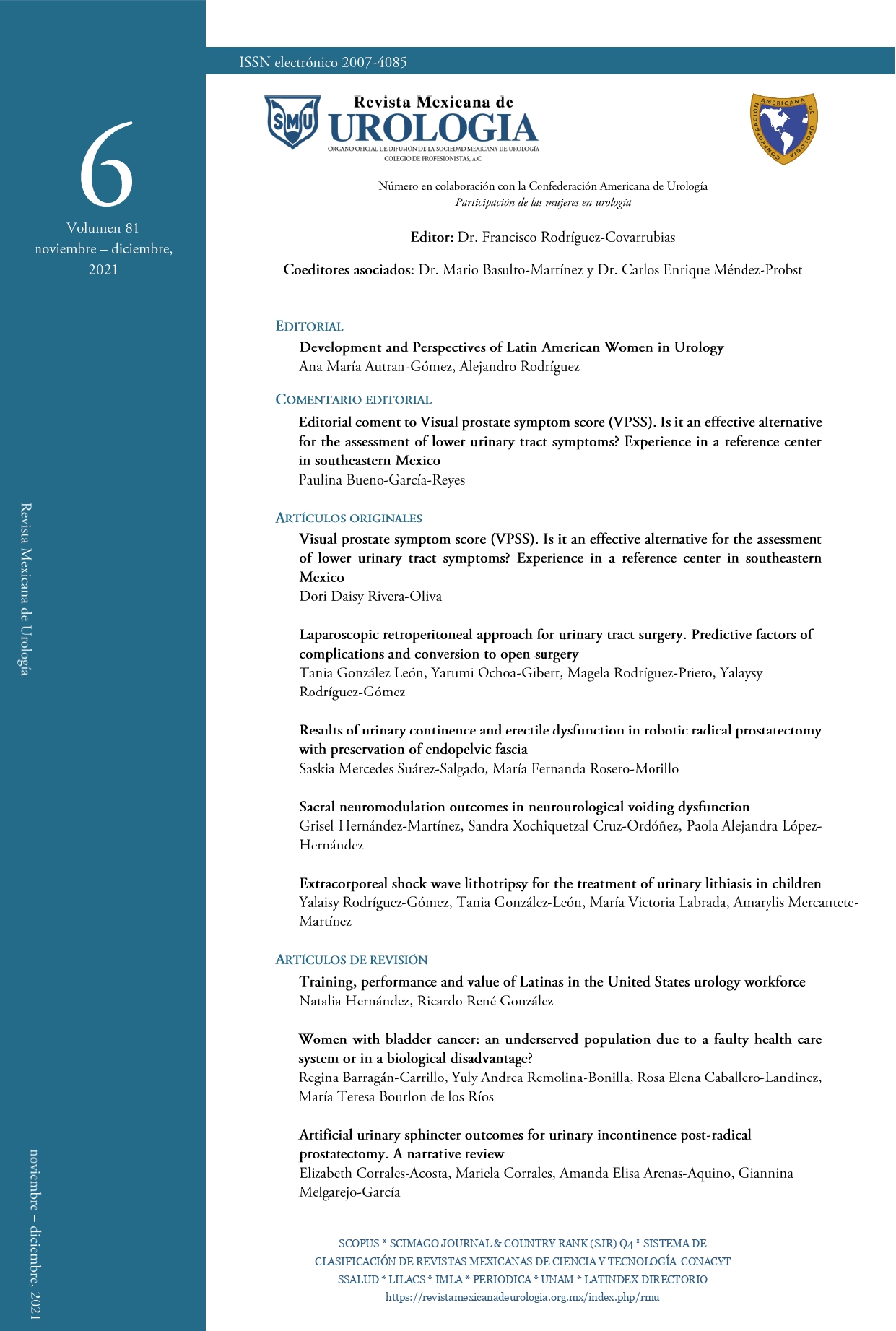Visual prostate symptom score (VPSS). Is it an effective alternative for the assessment of lower urinary tract symptoms? Experience in a reference center in southeastern Mexico
DOI:
https://doi.org/10.48193/revistamexicanadeurologa.v81i6.818Keywords:
Lower urinary tract symptoms (LUTS), Visual Prostate Symptom Score (VPSS), International Prostate Symptom Score (IPSS)Abstract
The International Prostate Symptom Score (IPSS) assesses lower urinary tract symptoms (LUTS). In our Department, we receive Mayan-speaking patients with low educational levels, which makes it difficult for them to understand the questionnaire. The visual prostate symptom score (VPSS) overcomes these barriers.
Objectives: To correlate the VPSS score with the IPSS one, in patients with LUTS who attend the Urology Department of the Hospital Regional de Alta Especialidad, to determine the prevalence of patients requiring assistance in answering both instruments. The correlation between the IPSS and VPSS and the Qmax of these patients will be evaluated.
Material and methods: A comparative cross-sectional study was performed in men of 40 years of age or older with LUTS, between January 2019 to January 2020. Uroflowmetry was performed and the VPSS and IPSS were applied to them, identifying those who required help to answer the questions. Pearson or Spearman correlation tests were performed according to the distribution of the data, evaluated using the Kolmogorov-Smirnov test. Categorical variables were compared using X2 or Fischer's test.
Results: Eighty-one men with LUTS were included. The mean age was 62.89+9.52. A significant correlation was found between total VPSS and total IPSS (r=0.708, p<0.001). 83.8% (n=67) of patients were able to answer the IPSS, and 98.8% (n=79) were able to answer the VPSS. The percentage of patients who required help to solve the IPSS was 43.5% (n=34) and the VPSS was 25% (n=20). No significant correlations were found between VPSS and Qmax (r=-.123, p=0.277), and IPSS and Qmax (r=-0.085, p=0.456).
Conclusions: The VPSS is a useful instrument in the assessment of LUTS, as it correlates with the IPSS. It also overcomes the barriers of language and educational level. However, it overestimates the severity of the symptoms referred by the patient. Then, studies are needed to improve this instrument.






